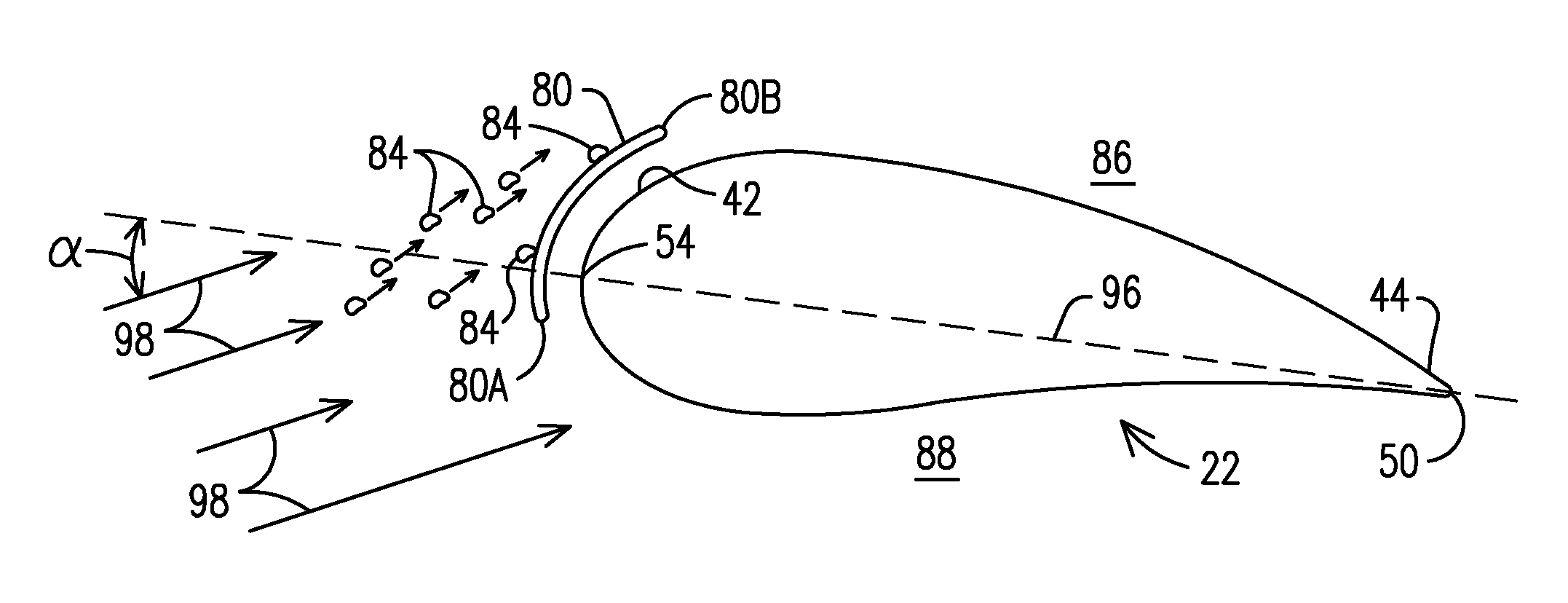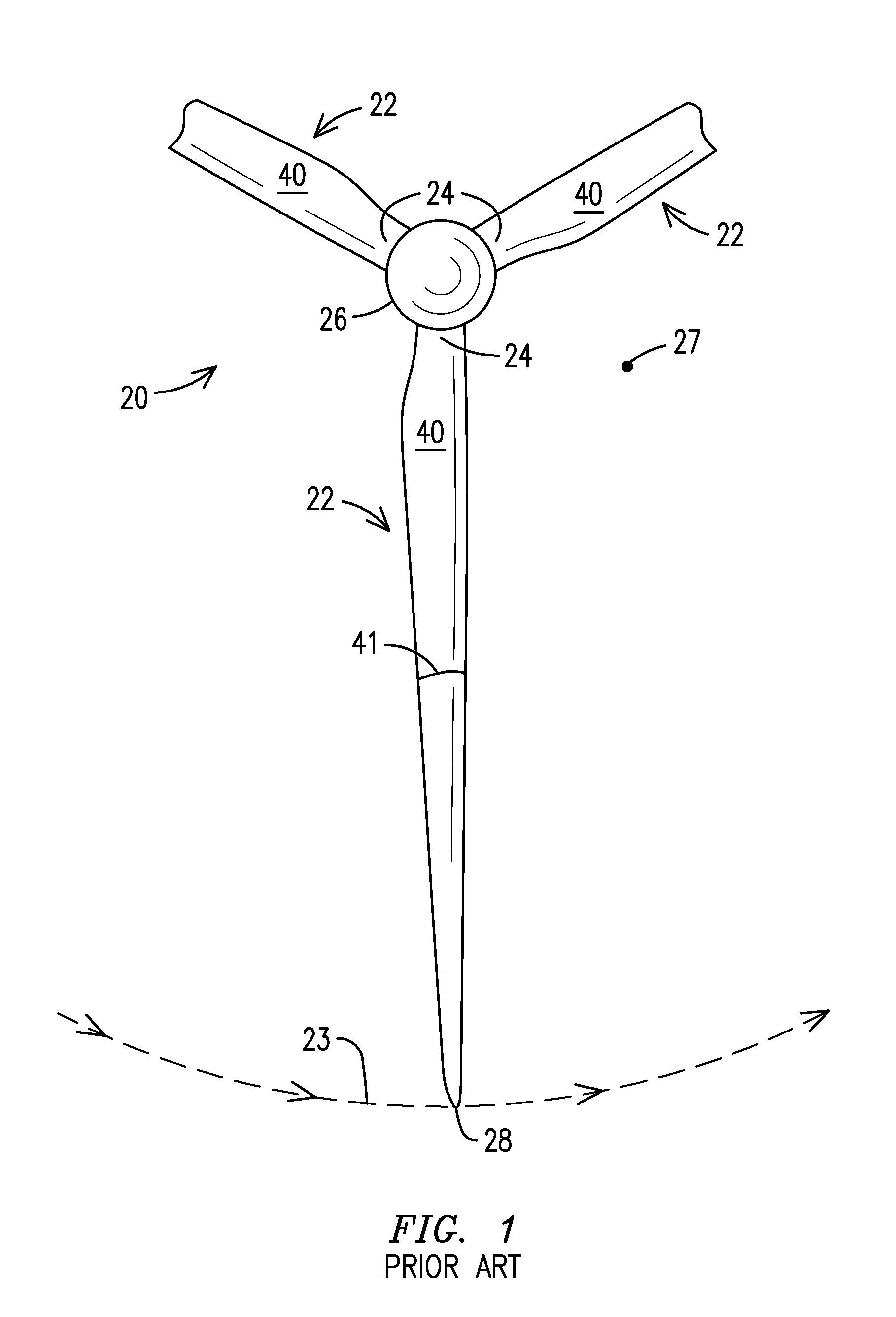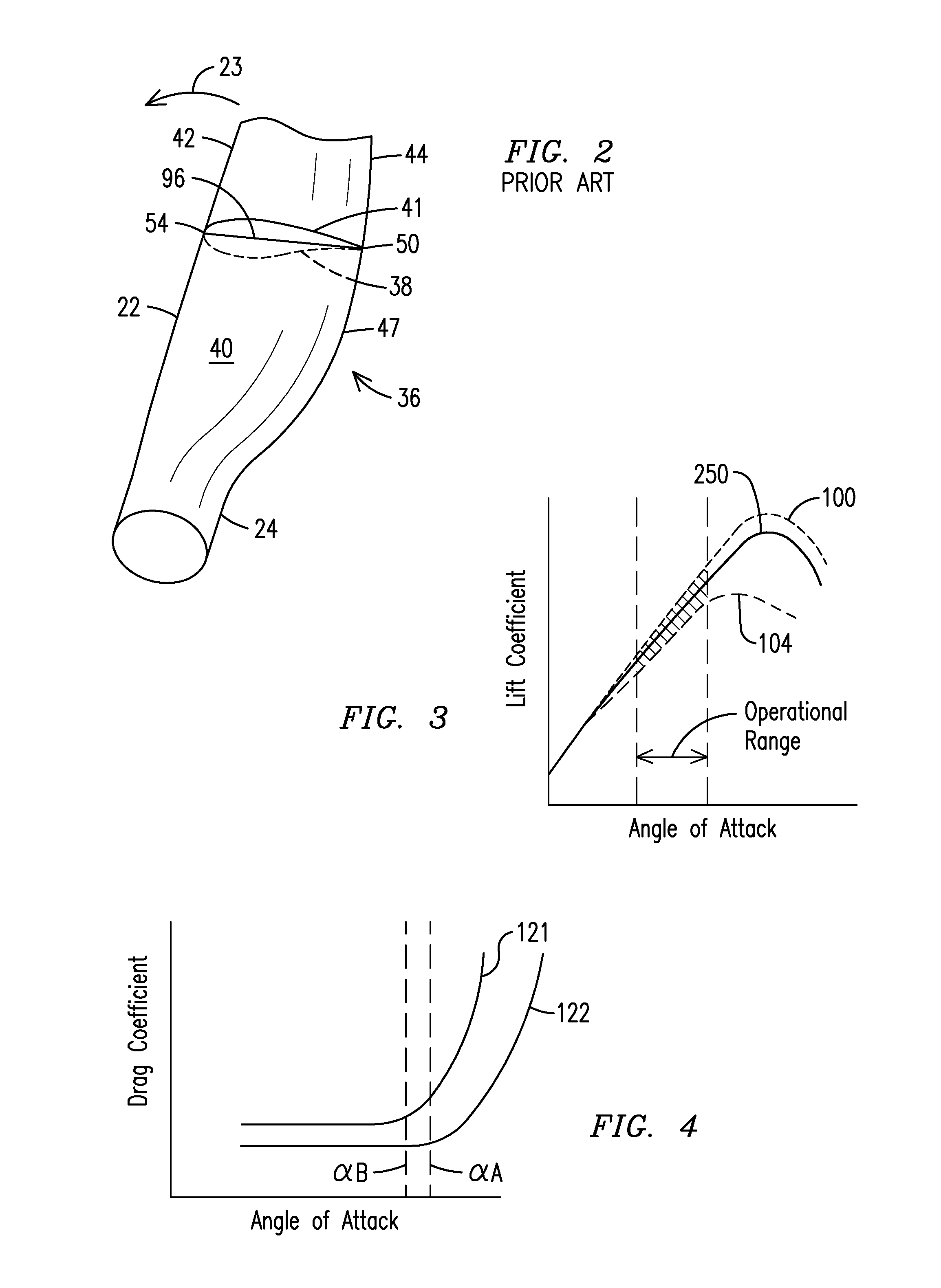Soiling shield for wind turbine blade
- Summary
- Abstract
- Description
- Claims
- Application Information
AI Technical Summary
Benefits of technology
Problems solved by technology
Method used
Image
Examples
Embodiment Construction
[0034]Given the problems associated with wind turbine blade soiling as described above, there is a need to reduce blade soiling to improve wind turbine generator performance.
[0035]FIG. 1 illustrates a suction side (or back side) of a prior art wind turbine generator (WTG) 20 with radially-oriented blade airfoils 22, also referred to as main airfoils or simply airfoils, that rotate generally in a counter clockwise direction 23 when viewed from the suction side. A vector tip 27 represents incoming wind, i.e., the wind flowing out of the sheet. A circle circumscribed by the rotating blades is referred to as a disc of rotation or a rotor plane. Suction sides 40 of the blade airfoils 22 are seen in this FIG. 1 view. Only rotating elements are illustrated in FIG. 1; for example, the nacelle and WTG tower are not shown.
[0036]Each blade airfoil 22 extends radially from an inboard end or root end 24 to a tip end 28. The root end 24, attached to a hub 26, is relatively thick to withstand flap...
PUM
| Property | Measurement | Unit |
|---|---|---|
| Length | aaaaa | aaaaa |
| Length | aaaaa | aaaaa |
| Length | aaaaa | aaaaa |
Abstract
Description
Claims
Application Information
 Login to View More
Login to View More - R&D
- Intellectual Property
- Life Sciences
- Materials
- Tech Scout
- Unparalleled Data Quality
- Higher Quality Content
- 60% Fewer Hallucinations
Browse by: Latest US Patents, China's latest patents, Technical Efficacy Thesaurus, Application Domain, Technology Topic, Popular Technical Reports.
© 2025 PatSnap. All rights reserved.Legal|Privacy policy|Modern Slavery Act Transparency Statement|Sitemap|About US| Contact US: help@patsnap.com



